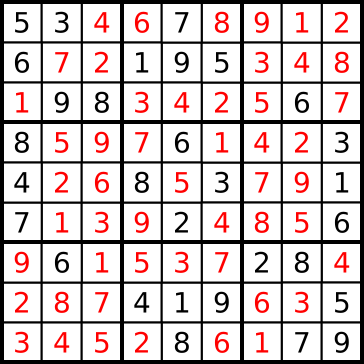A figure that I recently read was that 1 in 6 adults struggle to read. I myself had no idea that there are this many people who struggle to read, so understandably this figure shocked me. That's 1,000,000 out of 6,000,000! I think the reason why it shocked me so much is because reading is such a big part of the world today, and I don't there's a day that goes by when I don't read something, so to hear that that many adults struggle to read shocked me.
So after reading this statistic I wanted to write this post to (hopefully) encourage people to read more or for them to get into a regular reading habit. If you want to know about some of the benefits of reading, then a post of mine that you may want to check out is: The Benefits of Reading. A challenge is something that I felt would help spur people to read, so here it is.
This challenge is designed for anyone, so if you're a book-fanatic (who may already be reading this many books or someone who doesn't read at all, please take it on.
Monthly Reading Challenge:
I know that for some people this is going to be a stretch but I also know that for some book-fanatics they may already read this amount anyway, in which case I apologise if this isn't challenging enough.
The challenge is to read 6 books in a month. It doesn't matter how large of a book it is, 1 book whatever the size still only counts for 1 book. It is up to you to choose which books you want to read. Also the book length of each book has to be 100 pages or more. There are loads and loads of books that are over 100 pages so it will be easy to find books to choose from. This is mainly to stop people from reading 10 page books, it wouldn't really be that much of a challenge then would it.
You will have to read on average 1 book every 5 days to complete this challenge (,5.16 for a month with 31 days, and 4.66 for February - unless it is a leap year in which case you will have to read 1 book every 4.83 days).
Yearly Reading Challenge
The yearly reading challenge is basically the same as the monthly reading challenge excepts it is repeated 12 times to make a year, and is designed for people who want a longer-term goal rather than having just a monthly one. This challenge is to read 72 books in a year. So whatever date you start this challenge on, that will be the date you finish the challenge next year. That's an average of 6 books per month.
Like I said before, this is the monthly challenge repeated 12 times. So, if you wanted, you could just do the monthly challenge each month and still reach the same number of books over the course of a year - it's more about preference, having 12 smaller goals or 1 larger one.
So after reading this statistic I wanted to write this post to (hopefully) encourage people to read more or for them to get into a regular reading habit. If you want to know about some of the benefits of reading, then a post of mine that you may want to check out is: The Benefits of Reading. A challenge is something that I felt would help spur people to read, so here it is.
This challenge is designed for anyone, so if you're a book-fanatic (who may already be reading this many books or someone who doesn't read at all, please take it on.
Monthly Reading Challenge:
I know that for some people this is going to be a stretch but I also know that for some book-fanatics they may already read this amount anyway, in which case I apologise if this isn't challenging enough.
The challenge is to read 6 books in a month. It doesn't matter how large of a book it is, 1 book whatever the size still only counts for 1 book. It is up to you to choose which books you want to read. Also the book length of each book has to be 100 pages or more. There are loads and loads of books that are over 100 pages so it will be easy to find books to choose from. This is mainly to stop people from reading 10 page books, it wouldn't really be that much of a challenge then would it.
You will have to read on average 1 book every 5 days to complete this challenge (,5.16 for a month with 31 days, and 4.66 for February - unless it is a leap year in which case you will have to read 1 book every 4.83 days).
Yearly Reading Challenge
The yearly reading challenge is basically the same as the monthly reading challenge excepts it is repeated 12 times to make a year, and is designed for people who want a longer-term goal rather than having just a monthly one. This challenge is to read 72 books in a year. So whatever date you start this challenge on, that will be the date you finish the challenge next year. That's an average of 6 books per month.
Like I said before, this is the monthly challenge repeated 12 times. So, if you wanted, you could just do the monthly challenge each month and still reach the same number of books over the course of a year - it's more about preference, having 12 smaller goals or 1 larger one.
Detail:
Book Reading Challenge





















